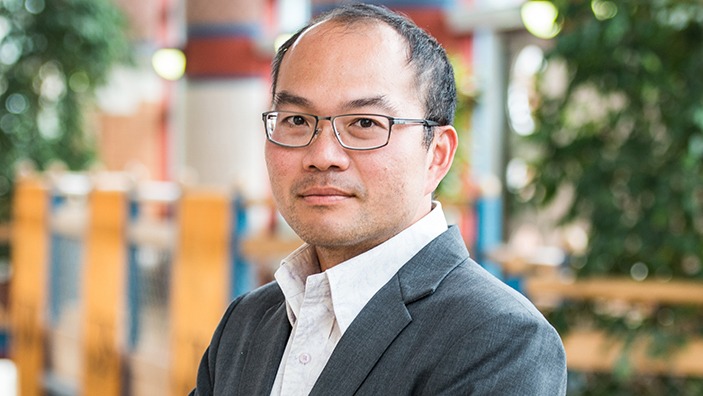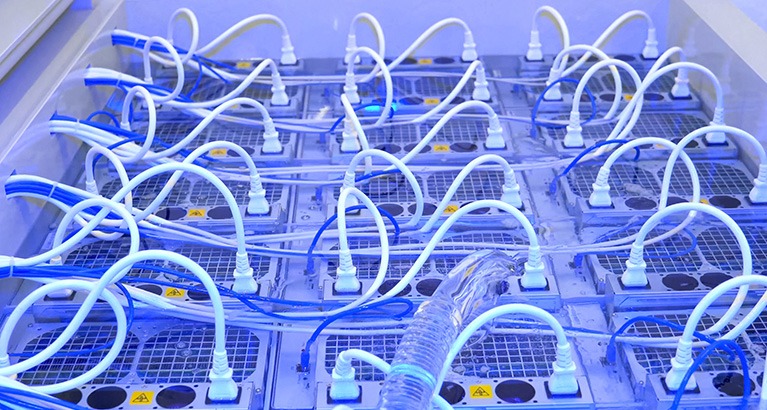The Balance Sheet, a series of webinars at Cambridge Judge Business School with alumni and other experts talking about vital topics of the day, recently featured several episodes focused on sustainability.

Hosted by Conrad Chua, Executive Director of the Cambridge MBA programme at Cambridge Judge, the webinars featured 2 Cambridge MBA alumni – Natalia Dziergwa (MBA 2018) and Nira Johri (MBA 2012) – and Cambridge Judge faculty member Chris Coleridge, whose work often focuses on net zero and other sustainability issues.
“The Balance Sheet series covers issues ranging from marketing to healthcare, but there is no greater overarching issue than climate change and sustainability,” says Conrad. “Sustainability is not only an issue for world leaders at global events like UN meetings, but is a topic in which all of us play a role. The Cambridge MBA programme is increasingly focused on the circular economy and net zero, so these webinar episodes on sustainability highlight the importance of these issues.”
Here is a summary of the webinars focusing on 3 growth areas, along with lightly edited excerpts from the speakers:
1. Sustainability and electric vehicles
Natalia Dziergwa (MBA 2018), who leads the Circular Cars Initiative at the World Economic Forum in Geneva, talked in the webinar about reducing carbon emissions in transport and the role of electric vehicles (EVs).
Currently about 75% of emissions attributed to the mobility industry are from tailpipe emissions, so there is naturally a keen focus on replacing internal combustion engines (ICEs) with EVs, Natalia said. But we should also consider other emissions when we talk about EV production – such as the recycling options of EV batteries and do we need to replace entire fleets in making the transition to EV.
Why the shift to electric vehicles creates sustainability challenges
Natalia shared some interesting statistics: at the moment a shift to an EV-only fleet of cars would require 3 million tonnes of lithium. In order to extract that amount of lithium and produce these batteries for EVs, it would take around 700 years. “Therefore, we need to look at other ways to address this issue and meet the net zero goals set out by the Paris Agreement,” she said.
The World Economic Forum is looking on ways to decarbonise the EV production industry. It takes approximately six times as many minerals (including lithium, cobalt and copper) to produce EVs than historically has been the case with ICE vehicles. These minerals are condensed in certain areas of the world – for example, most cobalt resources are in the Democratic Republic of Congo, and lithium in Australia, Chile and Argentina. So we need to ensure that these supply chains are resilient, but also that ethical and human rights standards are maintained when it comes to extraction, Natalia says.
How the disposal of old vehicles can export pollution to developing countries
Another important aspect when replacing ICE vehicles with EVs is what we do with old petrol- and diesel-powered vehicles.
“Currently a lot of old ICEs are exported to developing countries when they’re not suitable for use in developed countries,” Natalia adds. “So, while technically these vehicles are no longer producing carbon here, they’re still contributing to what we call a ‘carbon leakage’. So we should look at how to dismantle and recycle these cars, and should set standards in place for exporting and importing countries.”
When asked what are the challenges with the way greenhouse gas emissions are calculated for the production of EVs, Natalia said the focus has been on energy used in production but not the implications for biodiversity, deforestation and pollution regarding the energy used in EV production.
Natalia also said that cities should encourage the use of transport systems by investing more and developing more reliable and efficient public transport. Different regions will have different needs, but in general societies have mobility needs rather than car needs – and public policy should reflect this.
Currently a lot of old ICEs are exported to developing countries when they’re not suitable for use in developed countries … we should look at how to dismantle and recycle these cars, and should set standards in place for exporting and importing countries.
2. Sustainability in large companies – focusing on KFC
Nira Johri (MBA 2012), currently working as the Chief Sustainability Officer for KFC Global in Washington, DC, spoke about sustainability in large corporations and the challenges and opportunities she faces in her day-to-day work.
KFC is part of the world’s largest restaurant company Yum! Brands, whose other food chains include Taco Bell, Pizza Hut and Habit Burger Grill. KFC, which largely works on a franchised model, works in partnership with its sister brands on issues such as sustainability.
A webinar audience member asked: what is KFC’s commitment to people, food and planet?
“When we thought about our strategy, the way you design any sustainable strategy is around what matters to your business, what matters to our stakeholders, which issues really rise to the top,” Nira said, adding that food security is a particularly important issue.
Balancing business with animal welfare, climate and employment opportunities
“We are a chicken company and take our chicken seriously: we think about the animal welfare, we think about the climate and carbon impact of the chicken. Talking about the planet side, this is really about energy and resources used in our restaurants.
“We work with suppliers in different parts of the world; we have to understand the challenges they’re facing in bringing poultry to our restaurants. But we also have to drive the agenda, give them guidance and focus on how to meet our sustainability commitments that we’ve laid out.”
Concerning people initiatives at KFC, Nira talked about youth employment – engaging young people to give them skills and opportunities – and a programme to bring more women into the KFC workforce in India.
She says the measurement of impact in sustainability is a big challenge, owing to the decentralisation of data and the time-intensive nature of data reporting. “But we work with our business units, our franchises, and they are closest to the insights”.
Food waste and food packaging is another big challenge for the company – working to keep day-to-day food waste down while also working with communities to donate food that is still safe for human consumption to those who need it.
When we thought about our strategy, the way you design any sustainable strategy is around what matters to your business, what matters to our stakeholders, which issues really rise to the top.
3. Climate technology and entrepreneurship
Dr Chris Coleridge, Management Practice Associate Professor at Cambridge Judge Business School, discussed how entrepreneurship can help tackle climate change. Chris was an entrepreneur before joining academia and now teaches students about entrepreneurship. In 2019 he co-founded Carbon13, an accelerator which helps ventures focused on net zero goals.
“There are a lot of ways in which humanity is going to need to adapt and evolve in order to get past climate change, and find new ways of living on this planet sustainably,” Chris says. “But right now we have a tool for making change and getting it around the world quickly – and that’s startups.”
Carbon13 has made investments in 65 startups in the last 2 years and some of them will likely be household names in a few years, Chris says. But only two or three will be consumer facing, while the majority will be in the climate tech space or focused on helping industry make the transition between high carbon intensity activity and low or negative carbon intensity activity.
Why a blend of technical and business expertise is crucial for climate tech startups
So how does Carbon13 select ventures to invest in?
“We bring together a cohort of 80 people – 40 technology-science people and 40 people with business ideas-entrepreneurs. We get roughly 30 teams teamed up from this. The teams would then work on their ideas for three months. At the end they would do 2 pitches: first, pitch to our Investment Committee where they need to convince us that the venture has a chance of reducing emissions by 10 million tonnes CO2 equivalent per annum (in comparison, the carbon footprint of a typical British person is 6.5 tonnes), and a second pitch to our investors. And there’s another 3-month process where we help them to make further progress and get ready to raise more money.”
The idea here is to get the innovation out there, Chris says.
“In my academic career I’ve seen a lot of scientist-driven innovation. But often what happens is that the scientist leading the project doesn’t take commercial input at the right moment. So part of the magic at Carbon13 is that we insist we will not invest in teams where there is no blend of technical and business expertise.”
Regarding carbon offsets, Chris’s view is that voluntary carbon markets should be outlawed as they don’t work: “Our ability to emit carbon is a common resource. We can only do so much of it. When you have a common resource throughout the history of mankind, we have never seen a successful market-based solution to protecting it.” Chris thinks we should instead move to carbon taxes because government’s appetite for resources is something we can rely on.
Carbon13 associated startups
The startups that Carbon13 has launched and invested in include ventures to transform industrial and farm waste into new products, reduce energy use through a building management system and fast-to-install insulation kits, provide data to investment managers on sustainable investments, and use AI to improve soil outcome for farmers and to develop robotic sorting systems.
In my academic career I’ve seen a lot of scientist-driven innovation. But often what happens is that the scientist leading the project doesn’t take commercial input at the right moment.
Related content
The Balance Sheet series covers sustainability and other critical business issues.
Carbon13 have invested in and supported a wide variety of startups.





